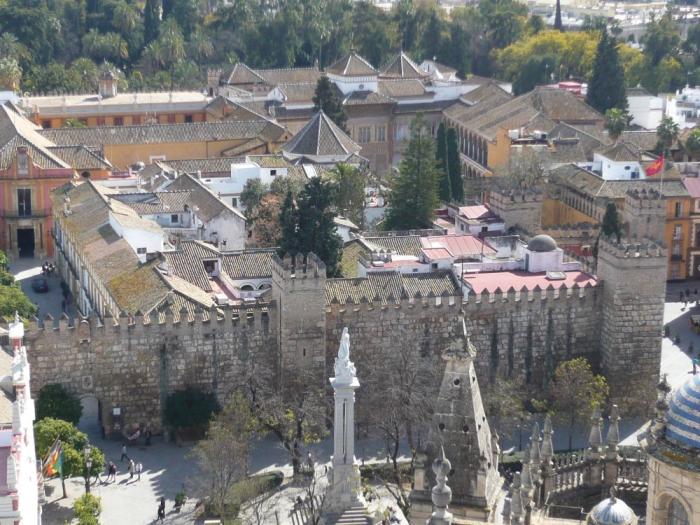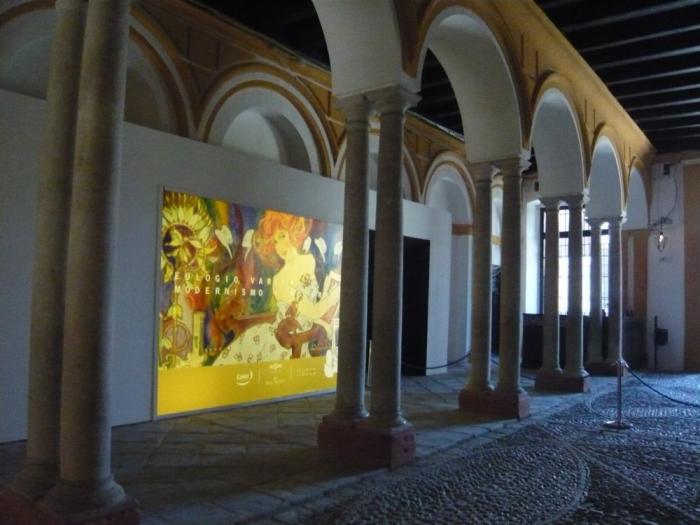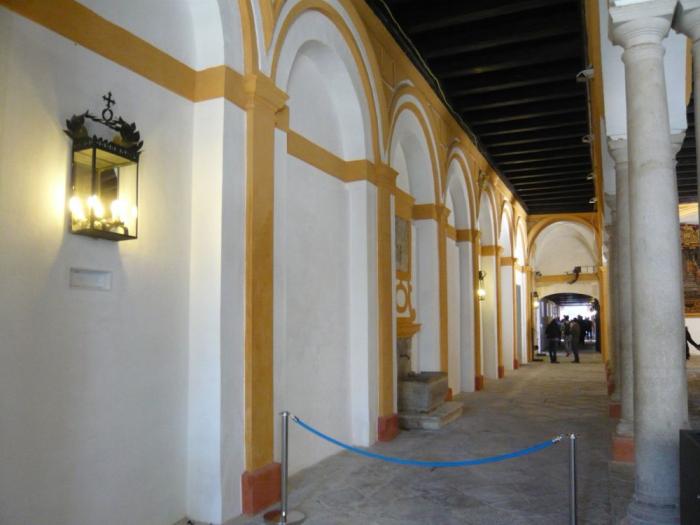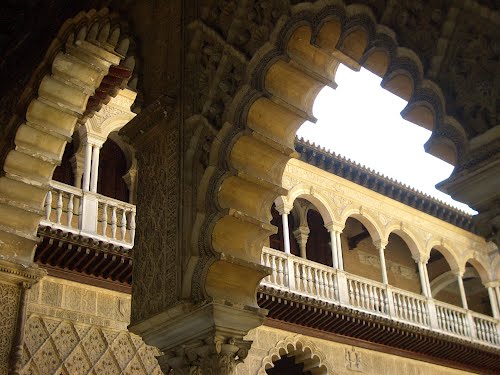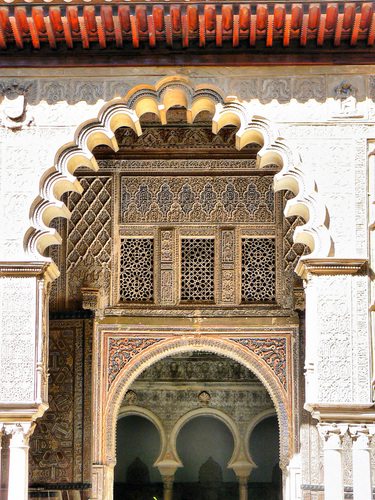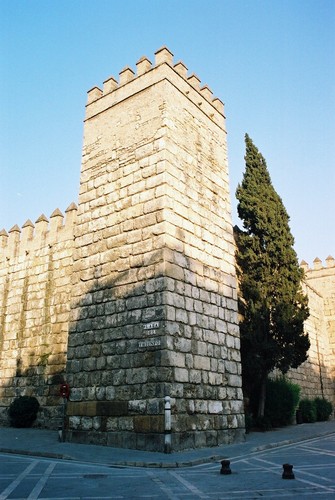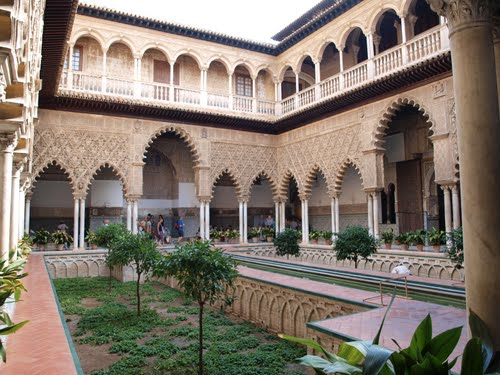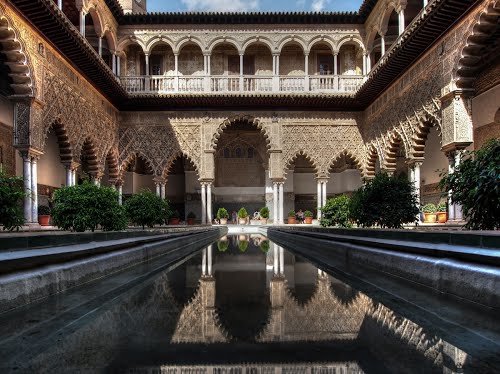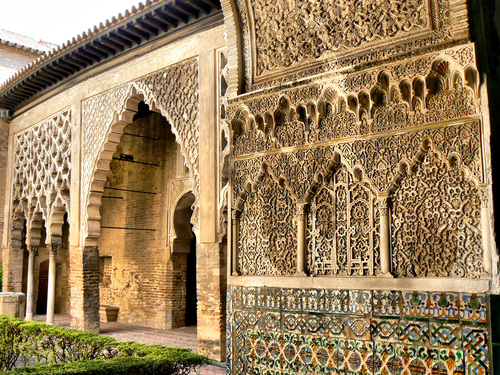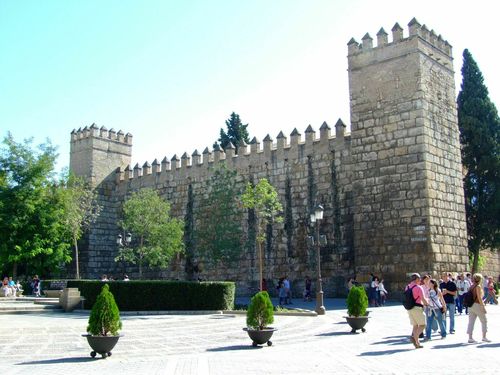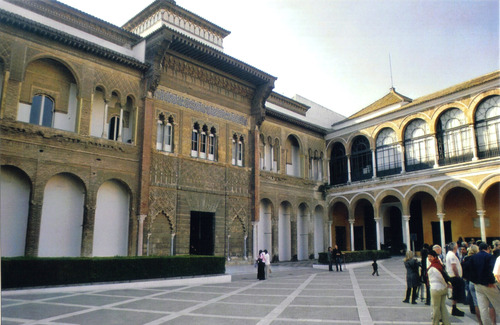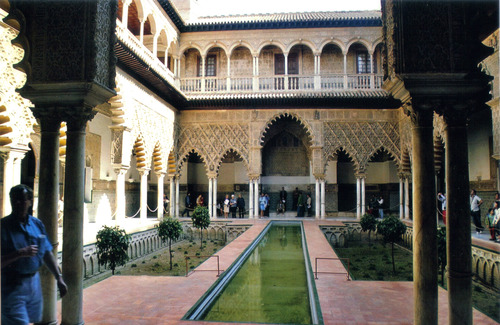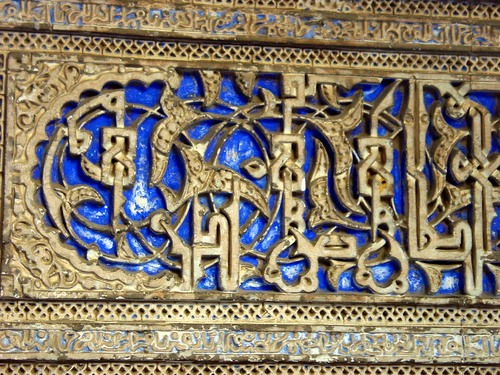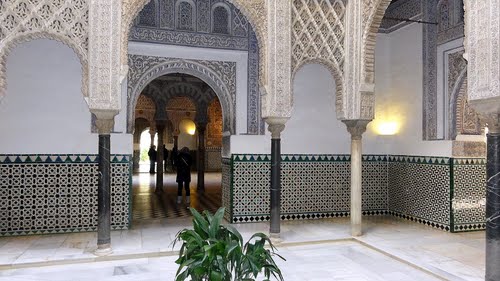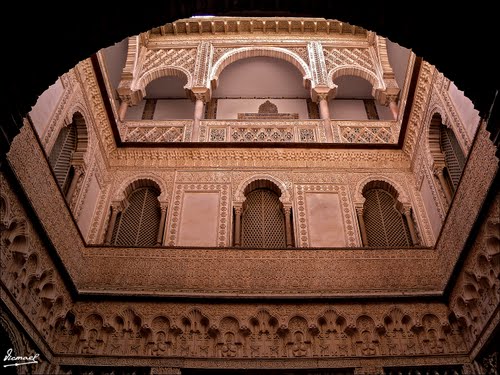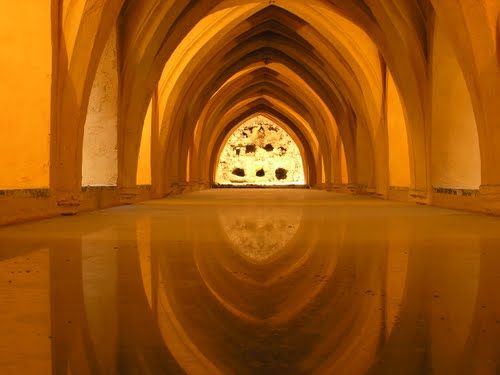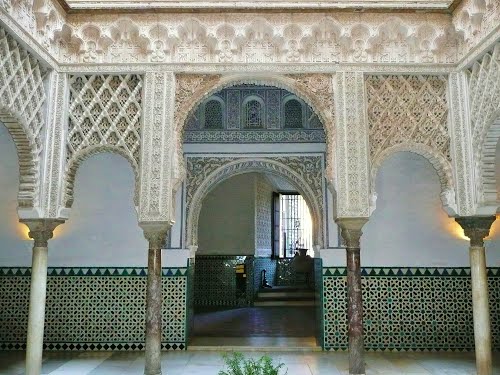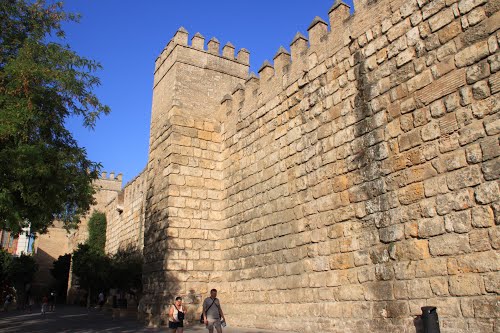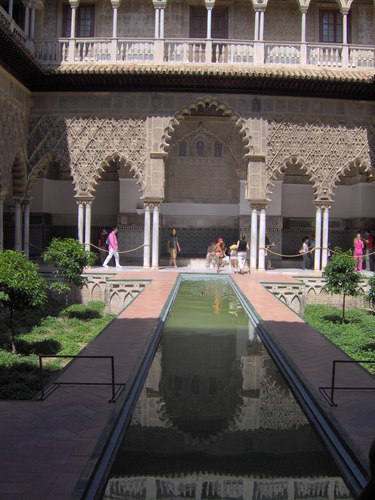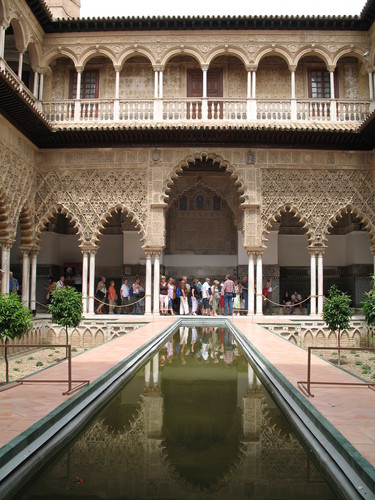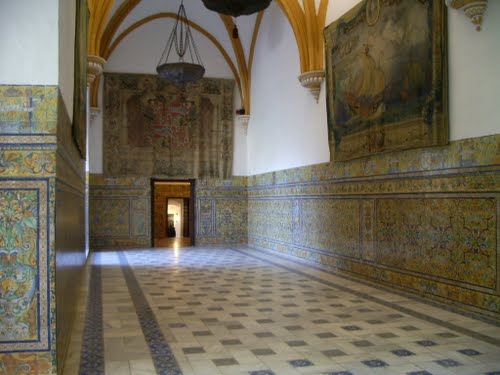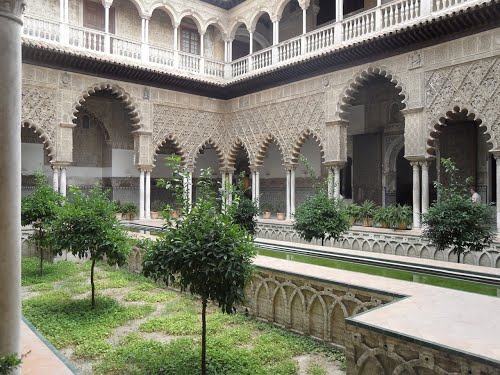The Alcazar of Seville is a royal palace in Seville, Spain, originally developed by Moorish Muslim kings. The palace is renowned as one of the most beautiful in Spain, being regarded as one of the most outstanding examples of mudejar architecture found on the Iberian Peninsula. The upper levels of the Alcazar are still used by the royal family as the official Seville residence and are administered by the Patrimonio Nacional. It is the oldest royal palace still in use in Europe, and was registered in 1987 by UNESCO as a World Heritage Site, along with the Seville Cathedral and the General Archive of the Indies.
History
The Real Alcazar is situated near the Cathedral and the General Archive of the Indies in one of Spain's most emblematic areas.
The Almohades were the first to build a palace, which was called Al-Muwarak, on the site of the modern day Alcazar. It is one of the most representative monumental compounds in the city, the country and the Mediterranean culture. Its influences held within its walls and gardens began in the Arabic period and continued into the late Middle Ages Mudejar period right through to the Renaissance, the Baroque era, and the 19th century. Subsequent monarchs have made their own additions to the Alcazar.
The palace was the birthplace of Infanta Maria Antonietta of Spain (1729-1785), daughter of Philip V of Spain and Elisabeth Farnese. The king was in the city to oversee the signing of the Treaty of Seville (1729) which ended the Anglo-Spanish War (1727).



